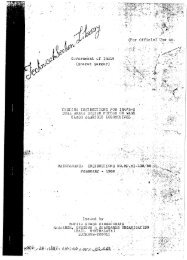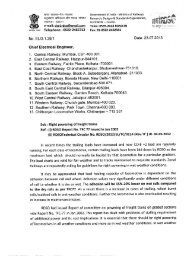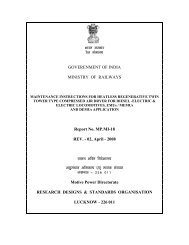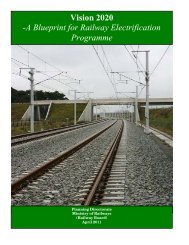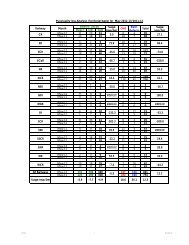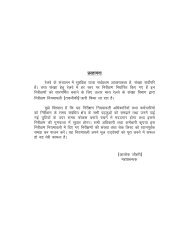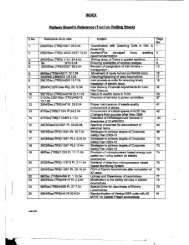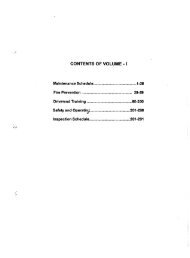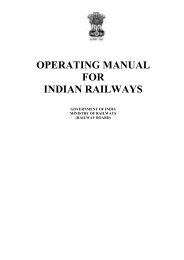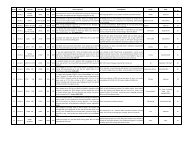Trouble Shooting Directory for Three Phase Locomotives - eLocoS
Trouble Shooting Directory for Three Phase Locomotives - eLocoS
Trouble Shooting Directory for Three Phase Locomotives - eLocoS
You also want an ePaper? Increase the reach of your titles
YUMPU automatically turns print PDFs into web optimized ePapers that Google loves.
INDIAN RAILWAYS<br />
Driver's Manual <strong>for</strong> WAG9<br />
System Description<br />
8.3 Resistor harmonic filter<br />
8.4 Capacitor bank harmonic filter<br />
9 Surge arrestor<br />
10 Earth return brush<br />
11 Earthing choke<br />
12 Valve set 2*ZV<br />
12.3 Pre-charging contactor of converters<br />
12.4 Contactor converter<br />
13 Valve set ZV + MV<br />
14 Pre-charging resistors of converters<br />
15.1 Resistor of over voltage protection unit<br />
15.3 Series resonant circuit choke<br />
15.4 Capacitor bank of series resonant circuit<br />
15.5 Capacitor bank of DC-link<br />
15.82 Earthing switch of DC-Link<br />
20 Traction motors<br />
3.3.1 General Description<br />
Due to technical and economical reasons electric traction vehicles are nowadays<br />
provided with three-phase asynchronous traction motors. The three-phase<br />
voltage required <strong>for</strong> operating the traction motors is generated on the vehicle by<br />
means of the traction converter connected between the vehicle‟s main<br />
trans<strong>for</strong>mer (single phase) and the traction motors.<br />
The traction converter allows the train not only to drive but also to brake<br />
electrically. To control the tractive or braking ef<strong>for</strong>t, and hence the speed of the<br />
vehicle, both the frequency and the amplitude of the three-phase converter<br />
output voltage are continuously changed according to the demand from the<br />
driver‟s cab. This allows continuous adjustment of the driving or braking torque of<br />
the traction motors, which means that the driving speed changes smoothly.<br />
When braking electrically the traction motors act as generators. In the converter<br />
the resulting three-phase electrical energy is converted into single-phase energy<br />
which is fed back into the line (recuperation brake).<br />
Output voltage of the Traction converter 2180 V<br />
Output current<br />
831 A<br />
Output power<br />
2365 kW<br />
89.4 An earth fault detection is integrated at the output of the Line converter.<br />
CHITTARANJAN LOCOMOTIVE WORKS<br />
Ident. No. 3EHW411172 Ver-1 Chap. 3, Page - 16



